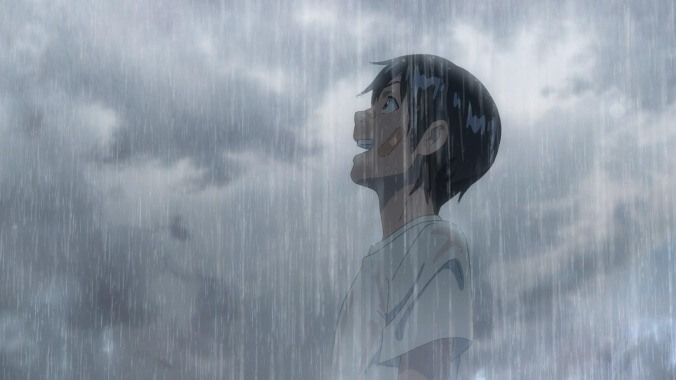Weathering With You director explains why his movie isn't really about fighting climate change
Makoto Shinkai says the film is about young people making a choice for themselves rather than cleaning up a previous generation's mess

[The following contains spoilers for the film Weathering With You.]
Makoto Shinkai’s magical-realist anime drama Weathering With You—one of our favorite films of the first half of 2020—takes place in a near-future Tokyo where it has been raining non-stop for an extended period of time, with people mostly resigned to the fact that it’s going to continue while still crossing their fingers for a rare sunny day. Hodaka, a teenager who runs away to Tokyo to escape his unhappy life in a small town, ends up crossing paths with Hina, an orphan girl who takes care of her younger brother on her own. She later reveals that she’s also a “sunshine girl” who inexplicably has the ability to make the rain stop by praying, but the more she does it, the more her body begins to disappear. The pair eventually discover that Hina is destined to be a human sacrifice and that her death will cause the weather to go back to normal, but after falling in love with each other, they decide that being together in a world besieged by terrifyingly bizarre weather is better than being apart. It’s sweet and sad, and it’s a truly beautiful film.
The central metaphor is obviously climate change, though it could also work as a movie about COVID-19 or governments leaning toward far-right fascism or any number of horrific nightmares that young people have to deal with while growing up, and now Shinkai has penned a lovely essay about what the movie means to him and why critics who said it doesn’t take a clear enough stance against climate change have it wrong. This comes from Collider and was put together in honor of Weathering With You’s one-night-only return to U.S. theaters today, and Shinkai’s basic premise is that his movie isn’t really about convincing young people to fight climate change at all.
